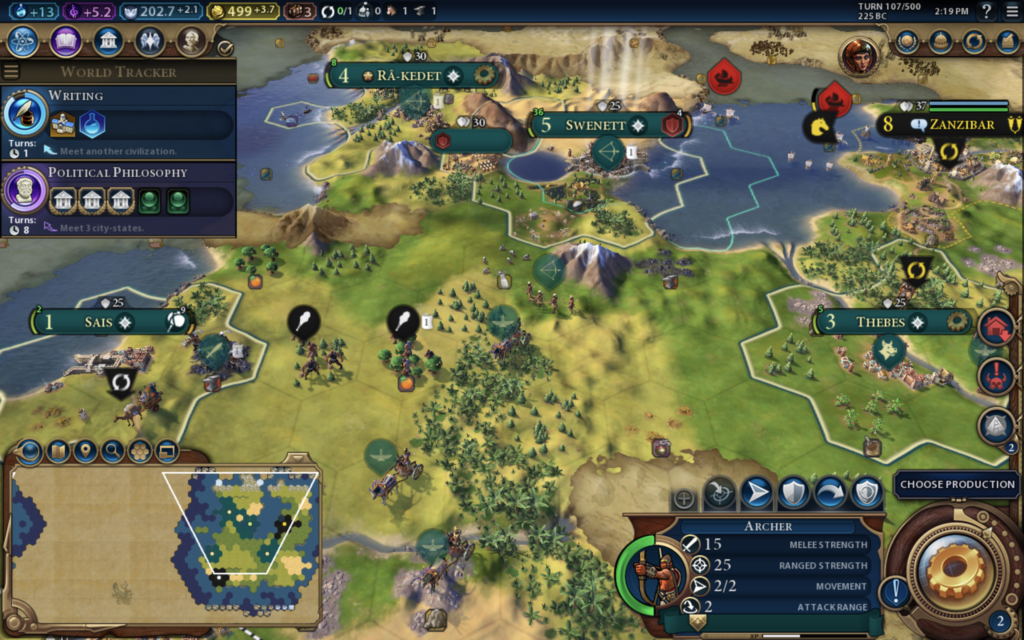Name of Game: Civilization VI
Creator: Firaxis Games
Platform: Nintendo Switch, PlayStation 4, Android, Xbox One, Microsoft Windows, iOS, Linux, OS X
Target Audience: 12+

Formal Elements:
Civilization VI by Sid Meier is a strategy game wherein the player competes to grow their ‘civilization’ from the Ancient Area all the way to Information/Future Era. The competition is multilateral competition, with the player competition against either the game algorithm driven player or other real people. Gameplay is turn-based and self-directed, with players choosing to allocate resources or move characters during their turn. There are four different categories that a player can work towards – culture, religion, technology, and domination – with the player who achieves the most progress, all categories considered, wins. This dynamic gameplay forces players to make distinct choices with limited resources, and only optimizing for one category will likely not lead to victory (with the exception of maybe dominance and conquering the world e.g. Genghis Khan style). The game is played within the app, with varying map sizes that roughly resemble Earth (land and sea, disparate continents).

Intended Fun:
Civilization VI incorporates Challenge, Discovery, Expression, and Fellowship types of fun. Challenge is obvious, with the goal of the game is to develop the ‘best’ society. The game, especially in initial stages, encourages Discovery; players start with very limited knowledge of the world, and have to explore the map as they grow their civilization to meet new cultures and discover new land to build cities. Civ VI incorporates Expression type of fun through the optimization decisions – players decide what categories to prioritize in their civilization and this drastically impacts game flow. Additionally, the game can facilitate Fellowship as players can play against friends, although this is not a core source of fun.
Commentary + Balance:
Civilization is one of my favorite games. I particularly enjoy strategy games, and the resource constraints and tradeoff decisions make the game incredibly intellectually engaging. The game AI that controls competing players is advanced, and although computer actions are similar after a few iterations, there are varying difficulty settings that can make the game more challenging. There is symmetry at the beginning of the game, with all players given access to the same resources and start with essentially the same position (some are slightly better or worse due to starting position on the map). While I often work towards the dominance and technology categories, I feel that there is not an eminent category that leads to victory more often than another. Further, all objects have the same value to each player, and optimizing for certain categories allows players access to different more impactful objects, but that is a design decision of the game that does not reflect a lack of balance and is it appears the game carefully considered this transitive relationship. The intransitive relationship is seen by the game’s fairly direct correlation of resources to benefits when building cities, and military units which are designed for specific purposes. There is not much of a ‘fruity’ balance – all resources are shared by all players within the map, and all players have access to the same objects (assuming they spend the requisite resources to aquire).


